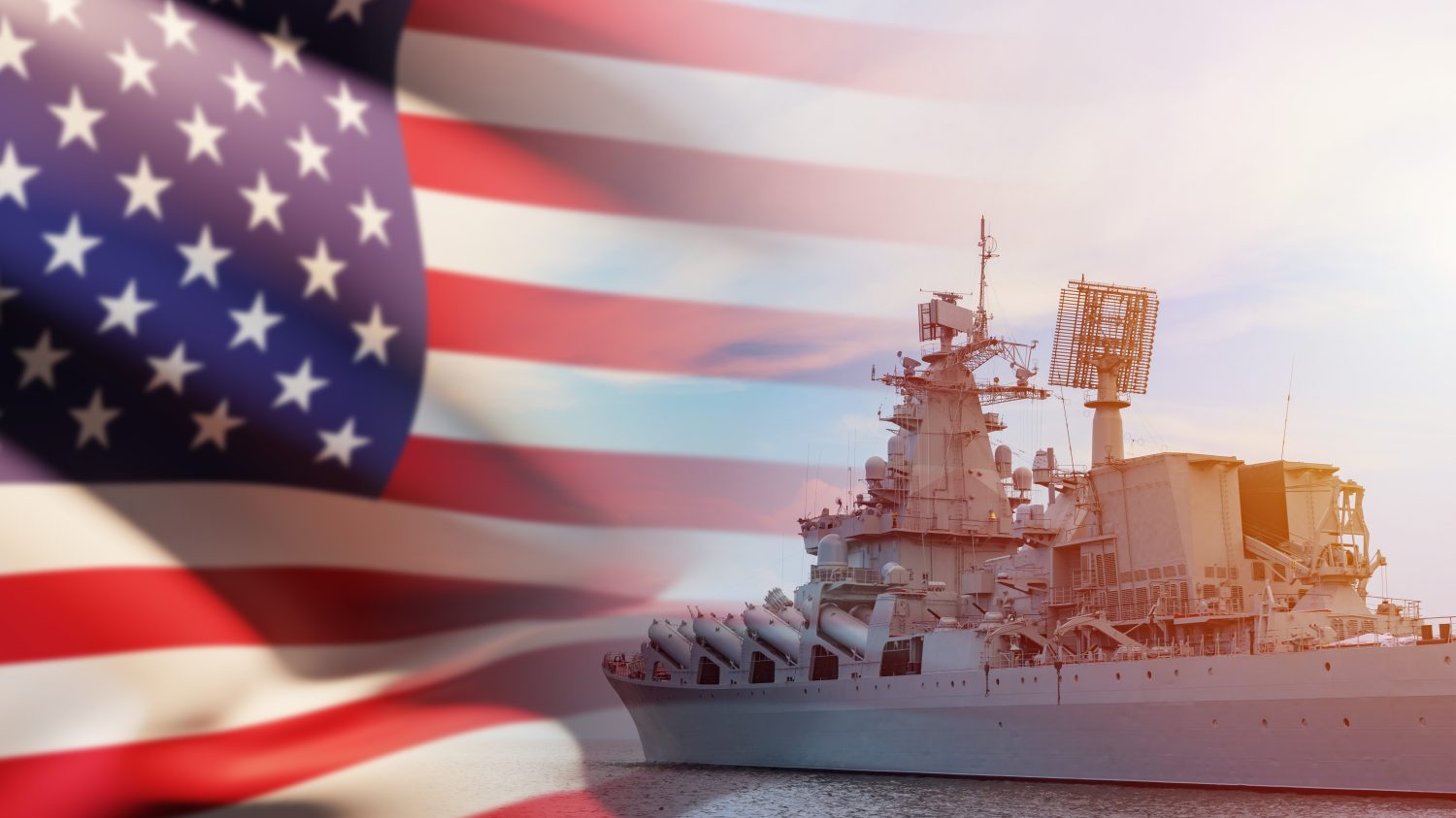Have you ever wondered about every type of vessel field by the US Navy? The United States Navy is one of the most technologically advanced maritime forces in the world. As such, it doesn’t come as a surprise that it has numerous types of vessels to fulfill various mission needs.
Aircraft Carriers

©Aerial-motion/Shutterstock.com
- Combat Role: Fire support, air missions, electronic warfare
When discussing any type of vessel in the US Navy, it is impossible to forego mentioning the aircraft carriers. These are the types of boats that won the Second World War and allow for advanced force projection and interdiction thanks to having air wings aboard each vessel.
Amphibious Assault Ships
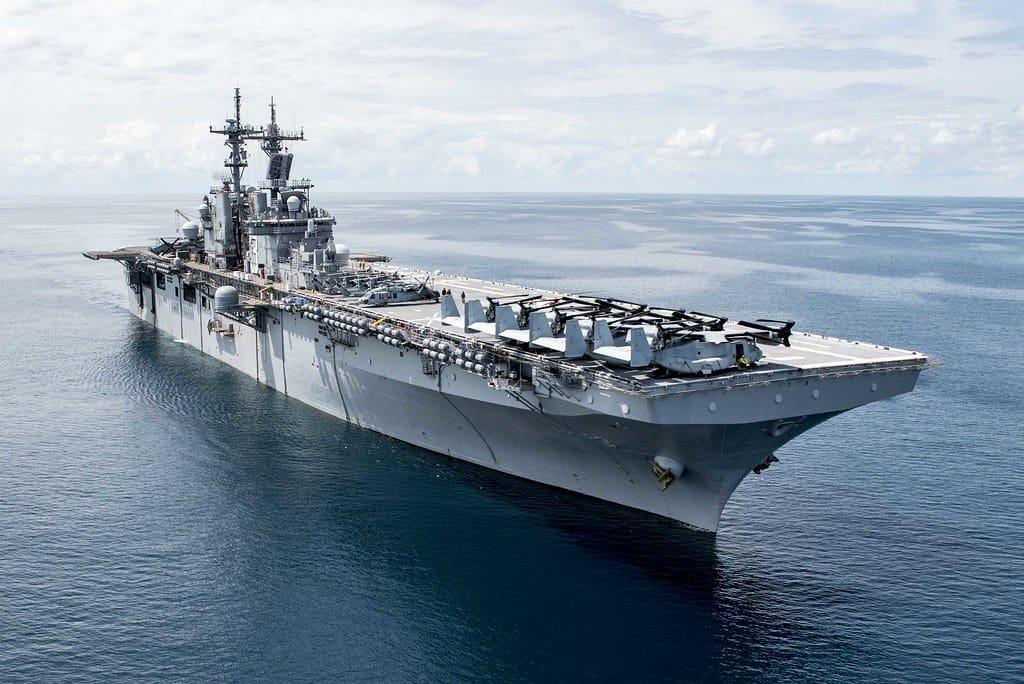
©"USS Kearsarge transits the Atlantic Ocean." by Official U.S. Navy Imagery is licensed under BY 2.0. - Original / License
- Combat Role: Troop transport, anti-submarine warfare
Amphibious assaults are largely a bygone function of the US Navy. However, it still fields a potent type of vessel in amphibious assault ships. These flexible ships can transport helicopters, and troops, and conduct naval warfare missions as needed against enemy ships and submarines.
Amphibious Command Ships
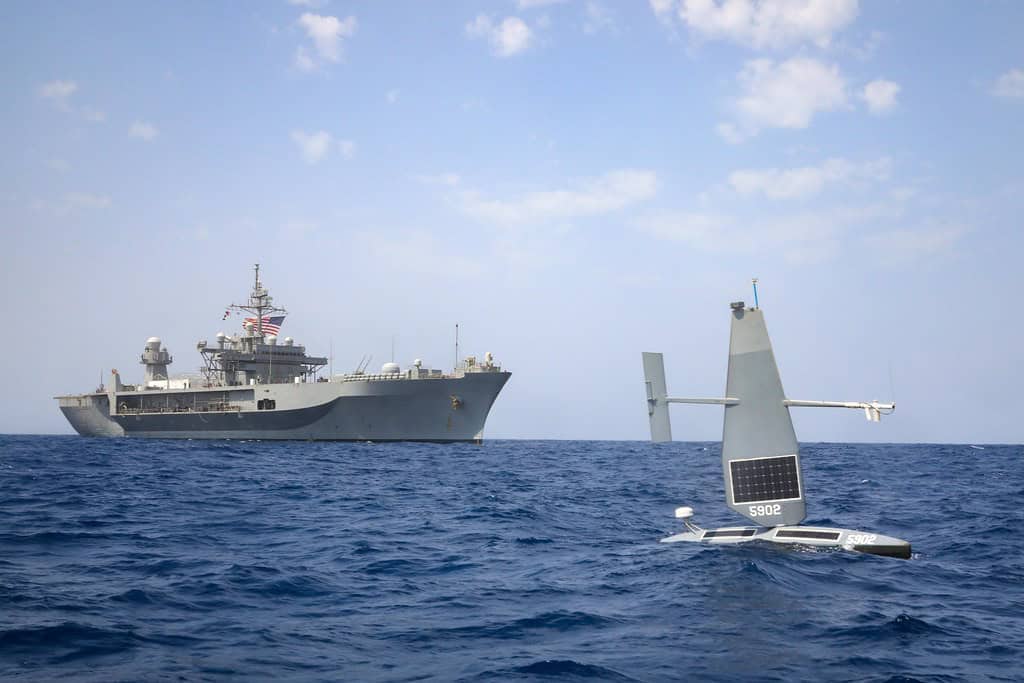
©"USS Mount Whitney (LCC 20) operates with a Saildrone Explorer in the Red Sea." by Official U.S. Navy Imagery is licensed under BY 2.0. - Original / License
- Combat Role: Command oversight of amphibious operations
One of the core functions of any Navy vessel is having a clear command structure. For this type of vessel, you’ll want an amphibious command ship. These serve as floating headquarters these days thanks to the unlikely event of needing an amphibious invasion ordered.
Amphibious Transport Docks
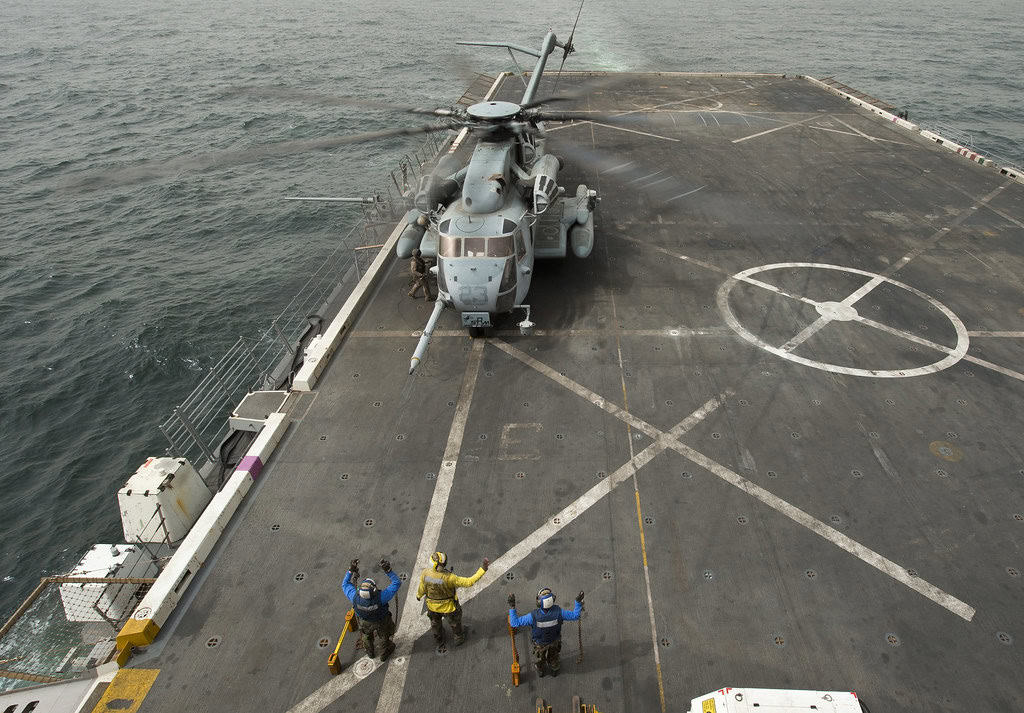
©"USS SAN ANTONIO (LPD 17)_130727-N-WX580-013" by U.S. Naval Forces Central Command/U.S. Fifth Fleet is licensed under BY 2.0. - Original / License
- Combat Role: Troop transport, vehicle transfer
When the Marines need to get ashore with their vehicles and equipment, they will be using an amphibious transport dock. This type of vessel can readily carry transport and logistics helicopters while shuttling troops to war zones with the use of landing craft.
Dock Landing Ships

©"USS Harpers Ferry (LSD 49) conducts amphibious operations." by Official U.S. Navy Imagery is licensed under BY 2.0. - Original / License
- Combat Role: Launching landing craft and amphibious vehicles
This type of vessel has some overlap with the amphibious transport dock. However, this is a larger class of ship and is capable of launching tanks and armored amphibious vehicles to a front as needed.
Expeditionary Mobile Bases

©"United Arab Emirates piloted UH-60M Blackhawk helicopters launch and land during flight operations aboard USS Lewis B. Puller (ESB 3)." by Official U.S. Navy Imagery is licensed under BY 2.0. - Original / License
- Combat Role: Logistics and vehicle transfers
These modular platforms are the heart of logistics in naval warfare. As you would expect with this type of vessel, they reduce the need for US Navy ships to dock at foreign ports for resupply and fueling purposes.
Cruisers
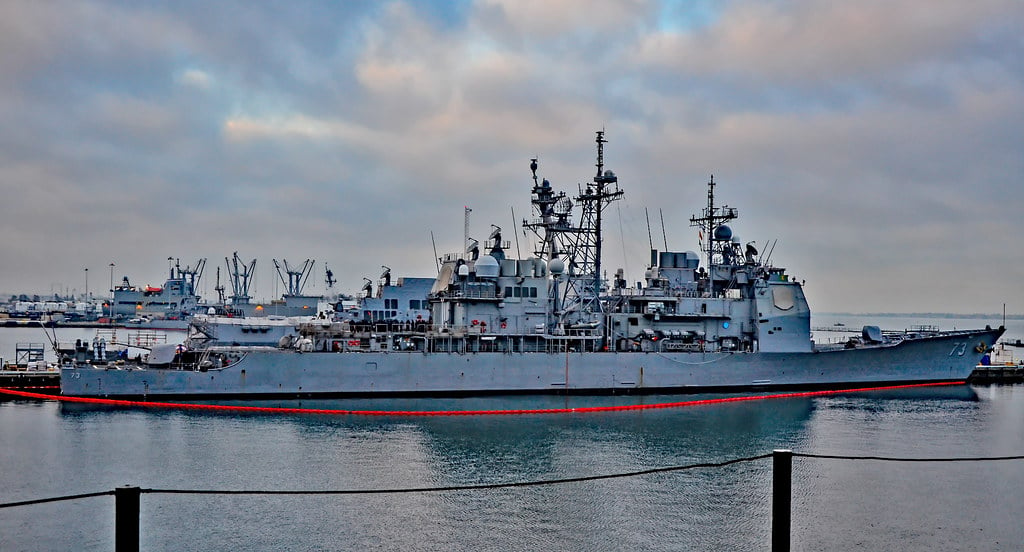
©"USS Port Royal (CG-73)" by TDelCoro is licensed under BY-SA 2.0. - Original / License
- Combat Role: Vessel escort, shore bombardment
Cruisers were once one of the most coveted ships in the entire world. However, as you’ll find with this type of vessel, their deployment is more limited in scope these days. That said, classic cruisers still work well for escorting shipping vessels across hostile waters.
Guided Missile Cruisers
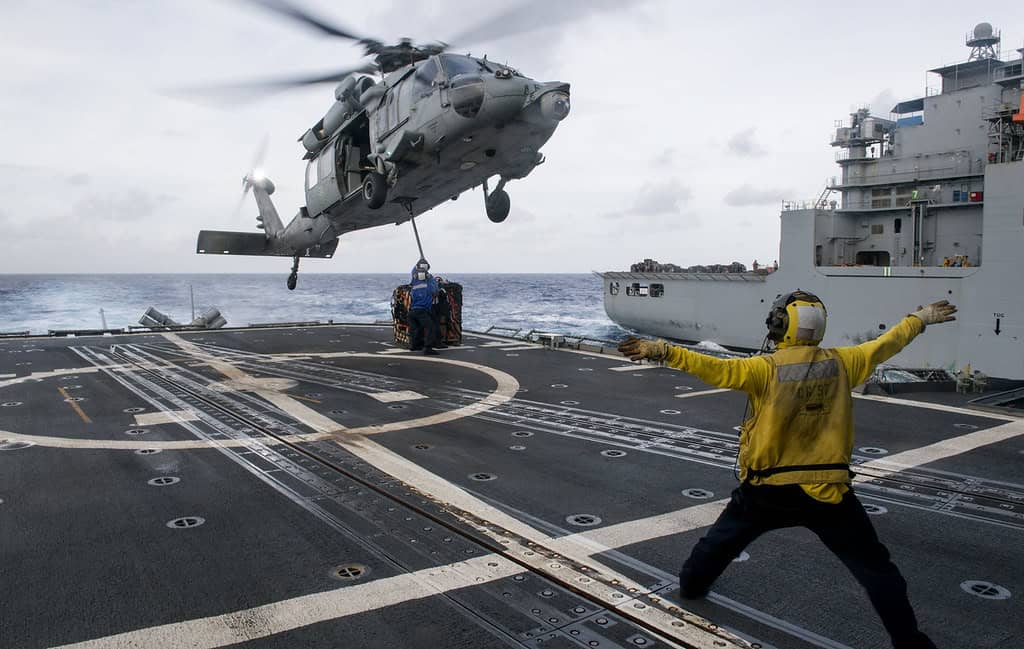
©"USS Lake Champlain conducts a replenishment-at-sea." by Official U.S. Navy Imagery is licensed under BY 2.0. - Original / License
- Combat Role: Air defense, shore bombardment
In the late 20th century, the face of naval warfare was changing. The reliance on guided ballistic missiles introduced a new need for the type of vessel that could readily interdict on targets without the need for a land-based deployment. Guided missile cruisers are the answer, readily launching missiles from afar to support land-based troops.
Destroyers

©"USS Lassen departs Fleet Activities Yokosuka for the final time." by Official U.S. Navy Imagery is licensed under BY 2.0. - Original / License
- Combat Role: Vessel escort
The destroyer caused a stir when it was introduced in the early 20th century. These days, the US Navy still fields this type of vessel but it is slowly becoming outmoded by more modern vessels. The strength of a destroyer is its heavy guns coupled with its high speed.
Guided Missile Destroyers
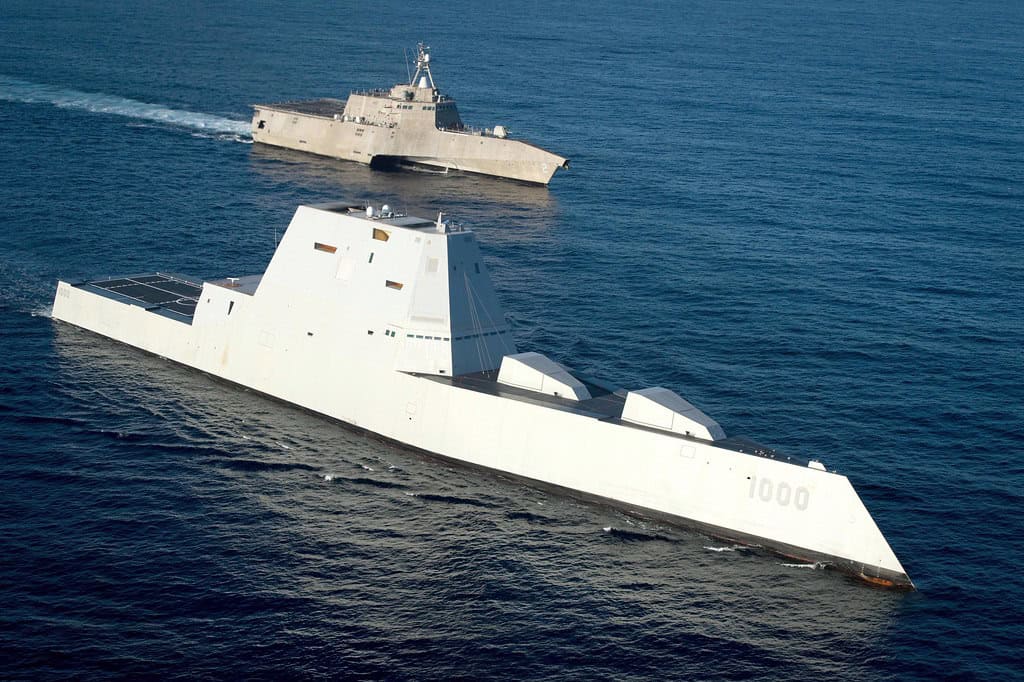
©"USS Zumwalt is on the final leg of its three-month journey to its new homeport in San Diego." by Official U.S. Navy Imagery is licensed under BY 2.0. - Original / License
- Combat Role: Launching guided missiles, anti-ship and anti-air duties
The guided-missile destroyer is an exciting new development for the US Navy. Pioneering the concept of a stealth ship, this type of vessel maintains all the strengths of a traditional destroyer while also being harder to detect. This makes for a potent and deadly combination.
Frigates

©"A US Oliver Hazard Perry Class Frigate" by David Blaikie is licensed under BY 2.0. - Original / License
- Combat Role: Protecting other ships
A frigate is among the oldest type of vessel to be fielded by the US Navy. These were originally fielded during the Revolution, and they still maintain a presence in the modern era. The modern frigate is primarily used for escort purposes, usually in conjunction with other ships like destroyers and cruisers.
Littoral Combat Ships
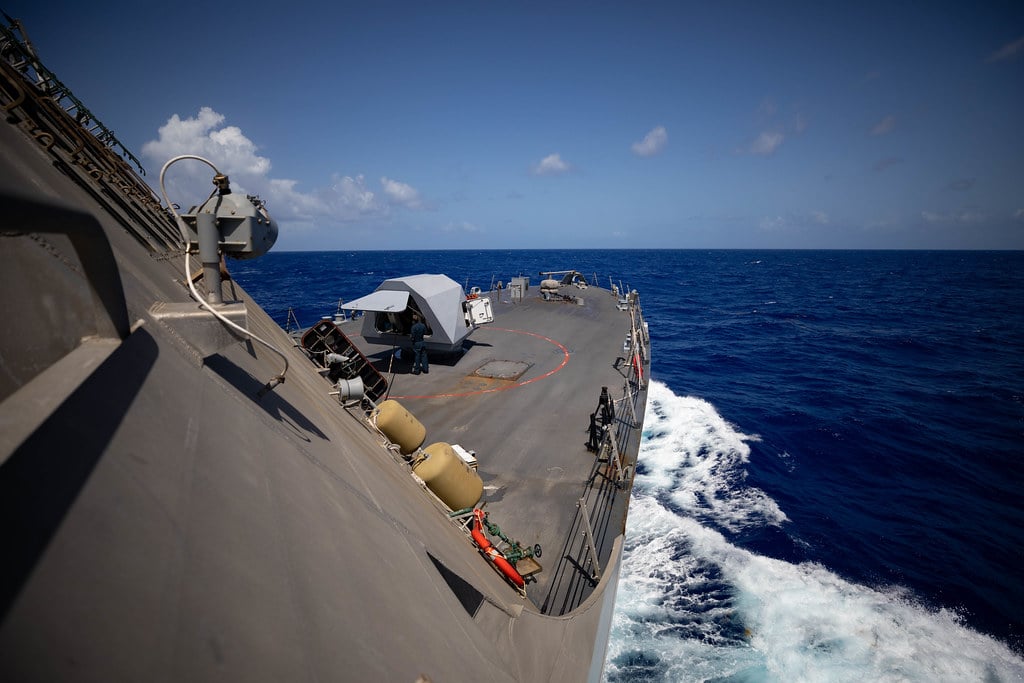
©"The Freedom-variant littoral combat ship USS Sioux City (LCS 11), transits the Caribbean Sea, July 9, 2021." by Official U.S. Navy Imagery is licensed under BY 2.0. - Original / License
- Combat Role: Fire support for land-based forces
LCS or littoral combat ships, are small stealth ships intended for fire missions for land-based troops. They are smaller by nature than something like a destroyer, but can readily rain fire down on enemy emplacements from miles away.
Mine Countermeasure Ships

©"USS Defender Port Call at PortBlair" by U.S. Consulate General Chennai is licensed under BY-ND 2.0. - Original / License
- Combat Role: Mine hunting and sea mine clearing
Sea mines still pose a threat to any type of vessel fielded by the US Navy. However, mine countermeasure ships readily dispose of these threats with minimal fuss. Mine clearing ships are still in constant use by the US Navy, and are vital for maintaining clear shipping lanes.
Patrol Ships
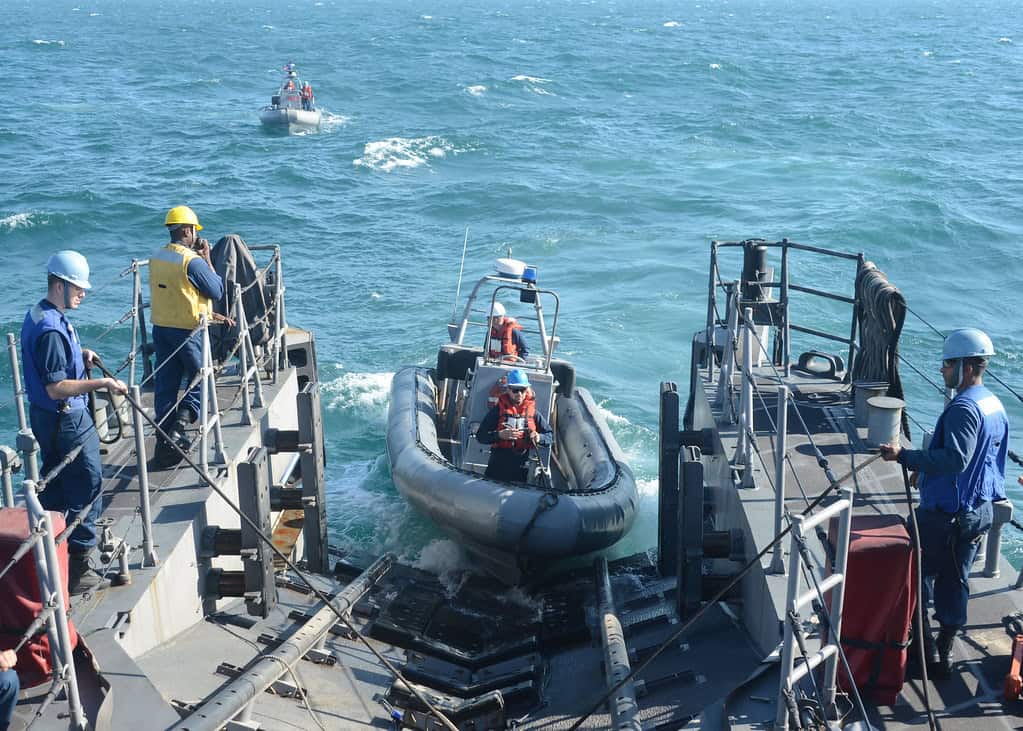
©"USS TYPHOON (PC 5)_140316-N-LO156-093" by U.S. Naval Forces Central Command/U.S. Fifth Fleet is licensed under BY 2.0. - Original / License
- Combat Role: Coastal patrols
While the US Navy can control much of the waterways across the world, aircraft carriers make for poor coastal defenses. Patrol ships are light, smaller ships that are intended for patrolling both the oceans and freshwater bodies in a country.
Submarines
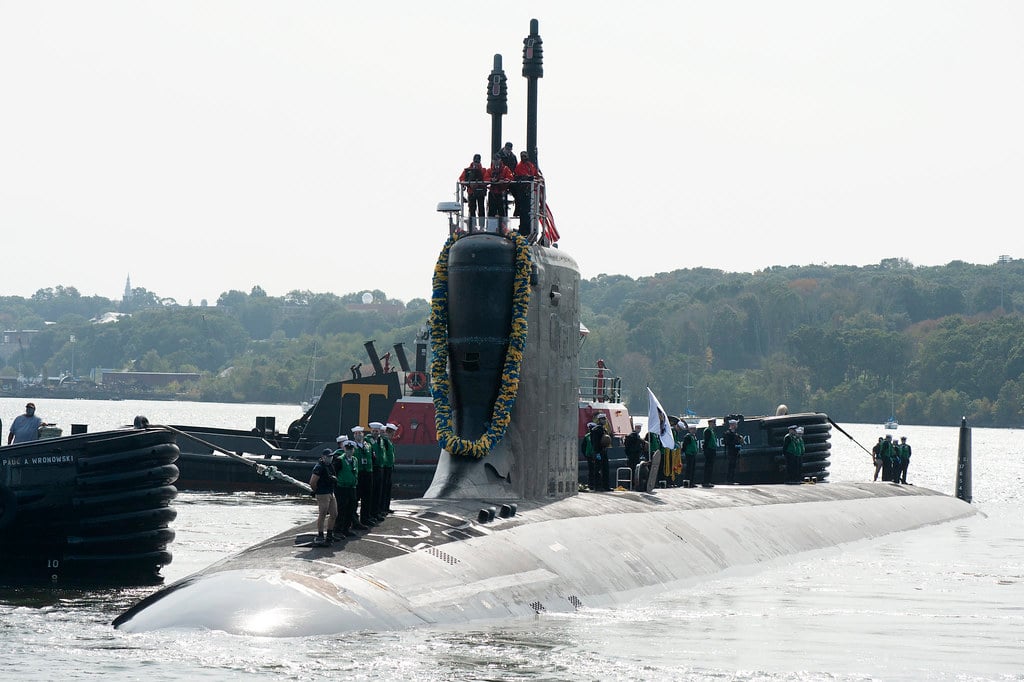
©"The Virginia-class submarine USS Indiana (SSN 789) completed her maiden deployment and returned home to Submarine Base New London." by Official U.S. Navy Imagery is licensed under BY 2.0. - Original / License
- Combat Role: Controlling naval activity and shipping lanes.
There isn’t a type of vessel that strikes fear into a sailor the way a submarine does. These submersible vessels frequently operate beneath the water, hunting enemy ships. Some also serve as mobile missile platforms. Their stealthy nature makes it impossible to detect, meaning launches can happen without any means of intervention.
The image featured at the top of this post is ©FOTOGRIN/Shutterstock.com.
